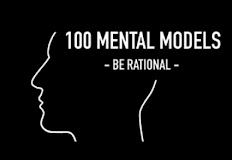China, India and Brazil are poised to fuel an explosion in international tourism in the coming years, showering money and jobs on countries ready for it, and trouble for those that aren't, industry leaders say.
With an estimated two billion new middle class consumers expected to come into the markets from those emerging powerhouses over the next two decades, the travel industry sees a potential gold rush ahead.
"The growth of China outbound travel is moving at a huge pace -- it is about 20 percent increase every year. And the number of outbound Chinese travelers hit 58 million last year," said David Scowsill, CEO of the World Travel and Tourism Council, an industry promotion group.
"And if you look ahead, (with about) 1.6 billion coming out of China and India, they are a huge amount of people coming in with money to burn," he told reporters.
The impact of that coming wave is a top topic at a three-day global travel and tourism summit that is opening in Las Vegas, drawing CEOs from many of the world's largest travel companies and top tourism officials.
Barriers to travel, technological innovation and change, body blows to tourism in quake-struck Japan and the turbulent Middle East also are on the agenda here.
"We'll ask the attendees whether they are ready to absorb that level of growth," said Scowsill.
"Are governments ready with infrastructure build? Are private investors ready to put the investment in, and generally speaking are we ready to absorb that level of growth?"
Countries that haven't caught up in time are likely to be cursed with fun-killing bottlenecks and overcrowding as millions of new tourists pour through the global travel system.
Ironically, said Scowsill, it is "the developed market leaders that don't fully understand the impact of tourism. They kind of take it for granted in a way that we do not see in some of the developing world."
The United States, for instance, has seen little growth over the past decade in the number of long-haul travelers it receives, at a time when the rest of the world has seen an increase of about 40 percent.
The biggest increase, 18 percent, came from the Asia-Pacific region. Visitors from China, Singapore, and South Korea increased their tourism related spending by 39 percent, 31 percent and 30 percent, respectively.
In the view of the travel industry, the US numbers would be much higher were it not for a system for granting US visas that is so gratingly slow that it is driving away visitors.
After the September 11, 2001 attacks, the United States instituted requirements that every visa applicant be interviewed in person by a consular level officer.
Friday, May 20, 2011
Subscribe to:
Post Comments (Atom)





No comments:
Post a Comment
your comments are now being moderated